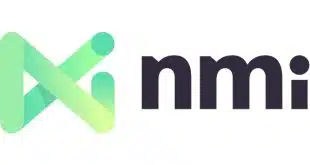Recent jumps in transaction activity and new business from both banks and billers have boosted optimism among online bill-payment processors and brightened their outlook for 2005 and beyond. Princeton eCom Corp., a 21-year-old processor in Princeton, N.J., ended 2004 having closed some 40 deals, including 34 with billers and six with financial institutions, one of the strongest such performances in its history. “We expect another strong sales year this year,” says Ronald W. Averett, president and chief operating officer for the company. Princeton eCom processed 70 million electronic bill payments last year, up about 30% year-on-year, and expects to handle 100 million this year, with growth to 140 million in 2006. Collectively, processors' volume in this market is growing 20% to 25%, Averett estimates. “One of the most compelling trends we're seeing is adoption growth trends in bill payment, with strong transaction growth,” he notes. Driving the growth, he says, is stronger interest among both banks and billers?Princeton eCom serves both?in what he calls “integrated solutions,” or a package offering consumers one-time payment, convenience payment, and auto-debit payment along with enrolled, recurring payment. At the same time, electronic bill presentment is helping to drive volume as more consumers find it easy to click payment buttons upon viewing bills on screen. “Bill presentment is becoming more mainstream,” Averett says. Of particular interest to billers now, he says, is convenience-pay capability, in which consumers make last-minute electronic payments, with same-day credit to their accounts, to avoid hefty late charges. Billers are charging $2 to $3 on average for each such transaction, down from an average range of $5 to $6 a few years ago as the service wins increasing adoption, he says. But the volume build-up is also pumping up income for billers. “Billers see a revenue opportunity,” Averett says. He estimates 2% to 4% of Princeton eCom's biller-side payments are convenience payments now, but projects that fraction will double this year and hit 15% in 2006. About 40% of the company's traffic comes from billers such as utilities and insurance companies. Interest in the service is spreading beyond utilities, Averett says, where it has historically accounted for a larger share of traffic. “It's a little niche that's becoming bigger,” he says. Princeton eCom's client base stands at 1,600 companies, including 1,400 financial institutions, of which the company serves 38 directly, with the remainder served through agreements with e-banking software partners.
Check Also
NMI Taps Mastercard to Power Its New Tap-to-Pay Service for Small Merchants Eyeing Mobile Payments
With an eye on small merchants, payment processor NMI on Thursday announced a tap-to-pay feature …



